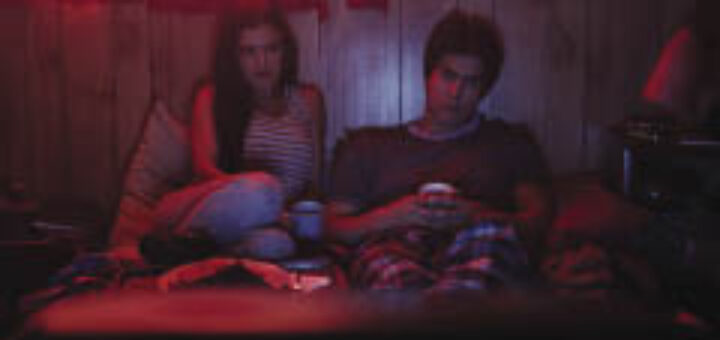The Indigenous mythology behind CBC Television’s new series, “Trickster”

By Karina Zapata, Publishing Editor
If you know anyone who has watched CBC Television’s new supernatural series, “Trickster,” you have probably heard that the show is truly like no other. Based on Eden Robinson’s best-selling novel Son of a Trickster, “Trickster” tells the story of an Indigenous teenager, Jared, who makes ecstasy and sells it at his after-school job to keep his family afloat.
Set in Kitimat, B.C., the show goes through the ins and outs of the difficult life of Jared, who is played by newcomer actor Joel Oulette from Medicine Hat. From looking after his partying mother who often speaks to the voices in her head, to paying his father’s bills, it seems like Jared’s life can’t get more chaotic. But then he begins seeing things.
Soon, his life is enveloped by supernatural sights, such as talking ravens, doppelgangers and shapeshifters.
And then Jared discovers that the raven he keeps seeing everywhere — at bus stops, at parties and even at his makeshift ecstasy lab — is actually a trickster, and that trickster is his biological father.
The trickster is a powerful figure across the globe. A common characteristic is that the trickster is cunning and foolish, but Indigenous communities in Canada construct the trickster in many forms. Continue reading to learn more about the variations of the trickster.
Northwest Coast Indigenous tribes
The show “Trickster” follows the mythology of some Northwest Coast Indigenous tribes, including the Haida, and represents the trickster as Raven. Raven also appears in the mythology of Inuit cultures. According to the Canadian Encyclopedia, the trickster is valued as a guardian spirit. In the CBC Television series, the trickster is meant to be killed at the hands of its own offspring in order to maintain harmony.
Cree
The Cree know the trickster as Wisakedjak, an adventurous and humorous teacher to humankind. In one story, Wisakedjak is asked to keep the animals and humans from fighting by the Creator and he disobeys. Because of this rebellion, the Creator flooded the world to create new life from the beginning. “While Wisakedjak played a role in the remaking of the world, some oral histories indicate that the Creator reduced his powers, leaving him with only the ability to flatter and deceive,” says the Canadian Encyclopedia.
Métis
In Métis culture, there are a few different variations of the trickster, including Wisakedjak, Nanabush and Chi-Jean — the latter being a close friend or relative of the former two. The story of Chi-Jean is shared across generations through the series of graphic novels, titled Chi-Jean and Other Métis Tales. The series teaches youth about the travels and adventures of this trickster, as well as the connection between humans and the land.
Siksika
Napi the trickster is central to many mythological Siksika stories. In these stories, Napi is known to be extremely powerful — he is even believed to have created the world and life within it. Despite this, Napi is a trickster, and like always, he is foolish, cruel and deceptive. In some Indigenous tales along the prairies and west coast, Napi is accompanied by Coyote, a thief and healer who received his powers from the Creator.
Now that you know a little bit about the significance of the trickster across some Indigenous cultures, tune into “Trickster” on CBC Television to see the legend play out on your screen. Not only is the storyline incredible, but the cast is next level — especially considering Jared is played by newbie actor, Oulette.
Make yourself a bowl of popcorn, turn on CBC Television (or CBC Gem on your computer) and indulge in this captivating show, which touches on issues like addiction, poverty and mental health. By doing so, you are making space for Indigenous culture and legends on mainstream television — and these are stories that you won’t want to miss.





